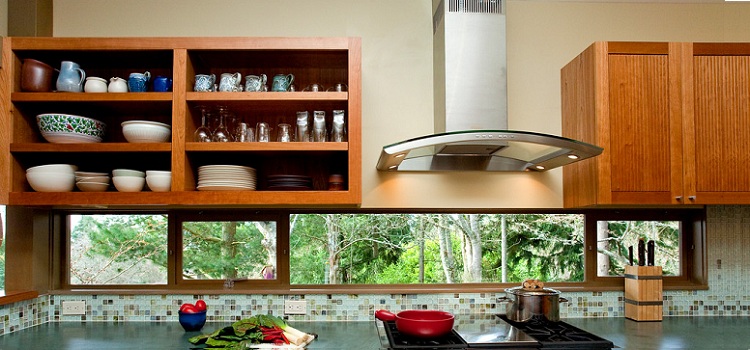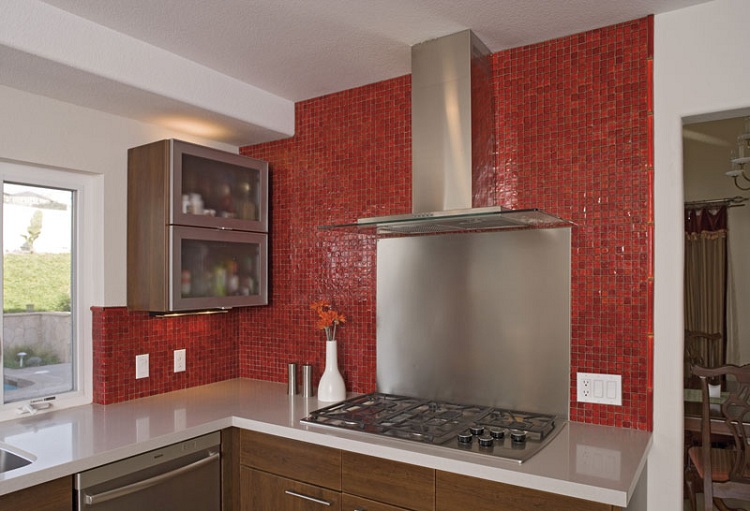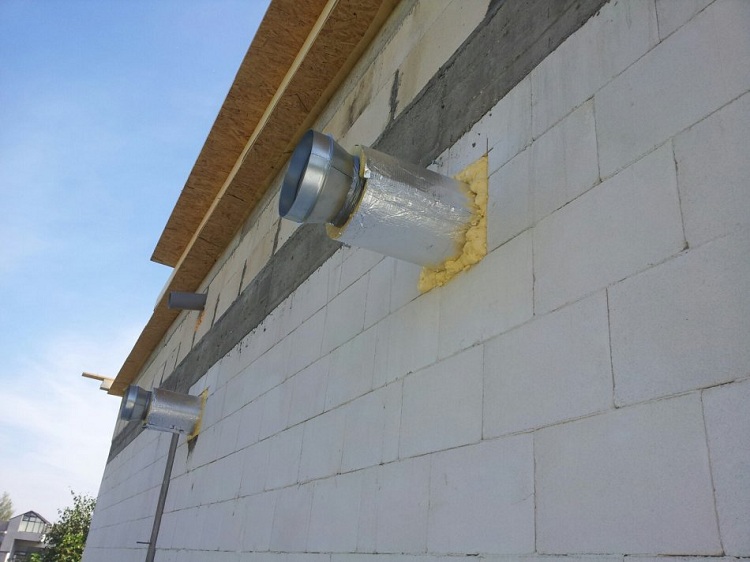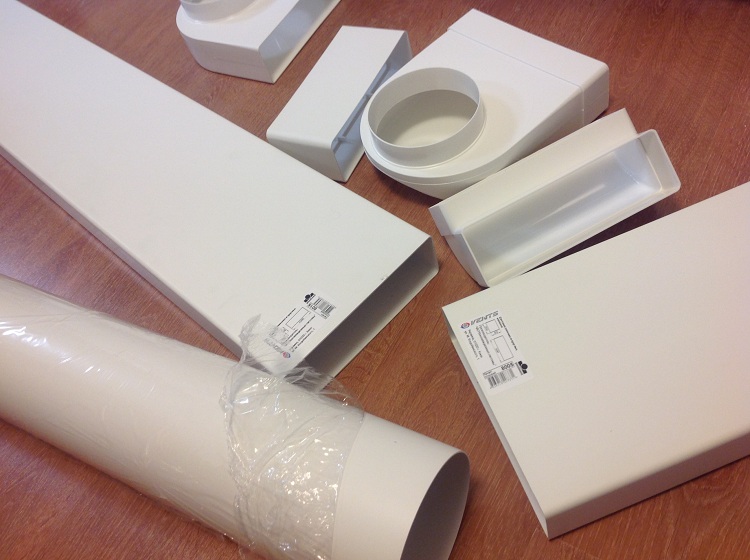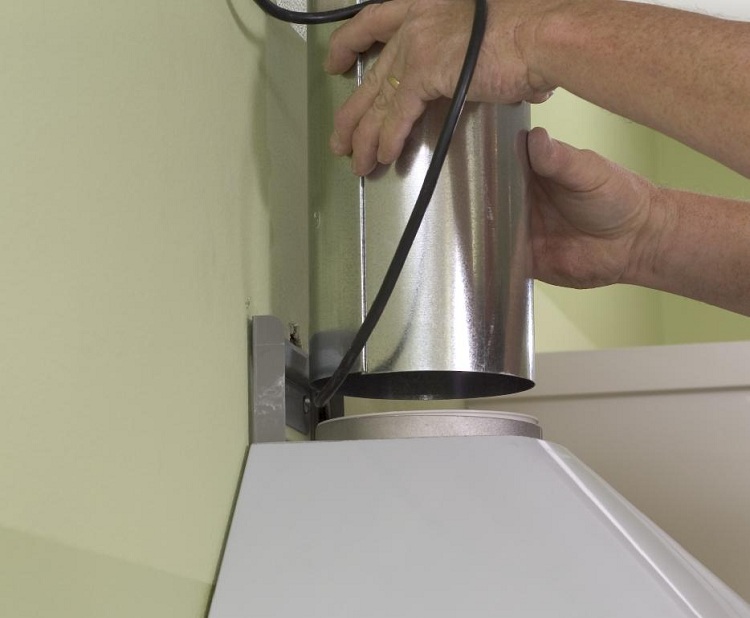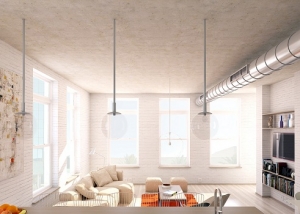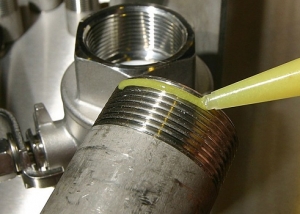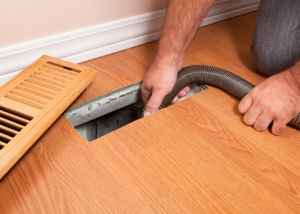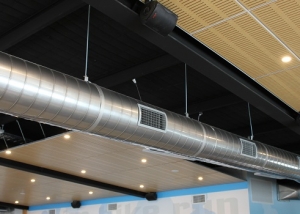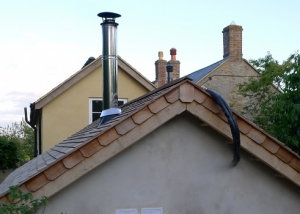Ventilation pipes for the hood are part of the system, which ensures the removal of polluted air into the street or its cleaning. Cooker hood is one of the designs that directly affect the comfort of living in the house. For the correct installation and operation of such a communication, it is recommended that you carefully study all its characteristics and the nuances of mounting both the exhaust devices themselves and the pipes for them.
Content
The design and purpose of the duct
The main objective of the ventilation system is the removal of harmful substances, smoke, unpleasant odors from the premises. In addition, she is responsible for cleaning the air. Typically, in private homes, the arrangement of furniture and equipment is included in the construction plan, which allows you to perform a hood in a convenient way. In apartments, problems with installing the stove directly under the ventilation duct or exhaust outlet occur much more often.
To date, there are many solutions to lengthen the duct, however, experts do not recommend installing too long designs. This is due to the fact that the length of the duct is reflected in the efficiency of the system.
In addition, the ventilation pipe for the cooker hood should not have many bends. It also reduces its performance. Based on this, we can conclude that the closer the hood is located to the shaft input, the higher its performance.
Important! It is not recommended to place the slab against a wall that is opposite the ventilation shaft, since the ventilation pipe will be too long. It is worth remembering that with every extra meter the system performance decreases.
The characteristics and features of the exhaust duct primarily depend on the type of hood. Ventilation systems are divided into two types according to the location of the exit: without exit to the street and with exit. The system of the second embodiment may have external ventilation pipes that pass through a wall or roof.
The materials from which the pipes for drawing are made can be different, but the most common of them are plastic and corrugated products. Both those and others have their own advantages and disadvantages, which must be familiarized with before choosing them.
Hood classification
To date, all hoods for the kitchen are divided by the following indicators:
- according to the installation option;
- according to the principle of action.
According to the installation option, the following types of hoods are found:
- Outboard. Such devices are installed directly above the stove (usually fixed on a wall or furniture).
- Recessed. The installation of such devices is carried out inside the kitchen cabinet or a special container. Built-in devices have a minimum effect on the design of the room, and they cope with their tasks no worse than suspended ones.
- Board.These devices are not domestic and are rarely used in private homes and apartments. The most common desktop exhaust devices in the kitchens of restaurants and other catering establishments.
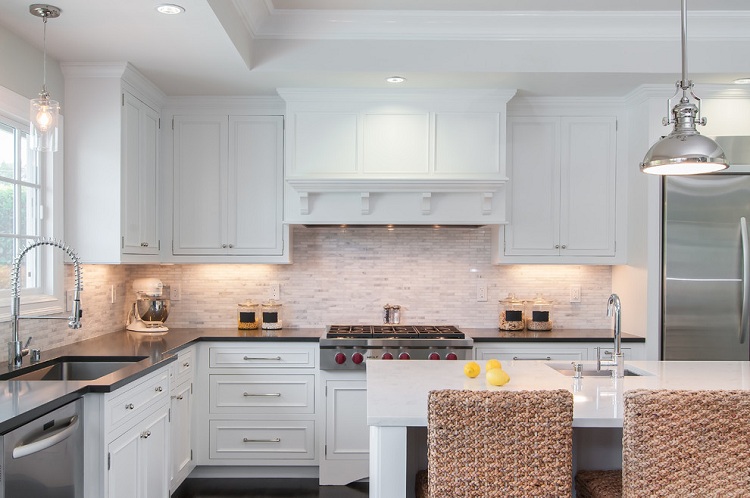
The built-in hood is hidden by furniture or a special box so that you can not see either the device itself or the ventilation pipe
According to the principle of action, all exhaust devices are classified into:
- Filtering. In such an exhaust design, air circulates through a special filter and is thus cleaned. Carbon filters are the most popular for such devices, but they need constant care. A similar system will do its job well in a small kitchen.
- Retractors. This equipment discharges harmful substances and unpleasant odors directly into the ventilation shaft, which is provided for by the construction plan. Suitable for the kitchen, which often cooks different foods.
Types of ducts
Today, choosing the right duct for a particular case is not difficult, thanks to many varieties. It is recommended to select these products according to their design features. According to this indicator, all air ducts are divided into two types:
- built-in;
- external.
Built-in ducts are susceptible to foreign bodies inside the structure. Therefore, during installation, it is worth considering that the surface of the pipes should be smooth. Otherwise, normal air circulation will be interrupted and communication performance will decrease.
Helpful information! Built-in ducts are mounted in the walls. Their use requires periodic preventive checks and cleaning work.
External ones are made in the form of suspension or docking boxes, which include pipes and other structural elements. An external duct is usually selected for the design of the room.
Types of ducts by material
All pipes for hoods are divided into two main types, depending on the material of production:
- hard plastic;
- flexible corrugated.
Plastic
Plastic external ventilation pipes for hoods can have a round or rectangular cross-section. Today, the most popular plastic ducts with a round cross-section, as the round shape allows you to minimize air resistance. Accordingly, the efficiency of such ducts is higher than that of rectangular. The latter have a more presentable appearance and fit better into the interior of the kitchen. The dimensions of the plastic ventilation pipe for the hood can be different, depending on the diameter of the hole in the ventilation riser and the cross section of the nozzle of the hood.
A very important parameter for the normal functioning of ventilation communication is the correct connection of the individual structural elements. As a rule, docking is performed using special components that can be purchased with ventilation pipes.
Consider the main advantages of using plastic pipes in the ventilation system:
- plastic has excellent noise insulation qualities;
- the walls of plastic pipes are perfectly smooth, which allows air to circulate through them without encountering any obstacles in its path;
- plastic pipes do not accumulate dirt and grease on their walls.
Corrugated
The exhaust pipes in the kitchen can be corrugated. The main advantage of this duct is the ease of installation. A corrugated metal pipe, which is used for the ventilation system, is mounted as follows: one end is fixed to the hood, and the other to the ventilation shaft. Fixation of the corrugated pipe occurs due to special coupling clamps.
The hood outlet is made in the form of a square, so when buying a corrugated pipe, it is recommended to immediately purchase an adapter that will allow you to connect the structure into a single whole.
Corrugated pipe for hood has the following advantages:
- the corrugated pipe can be stretched, thereby adjusting the length of the duct;
- the absence of connecting elements and angles minimizes the resistance inside the pipe;
- such products are much cheaper than plastic;
- if necessary, thanks to the flexible structure, it is possible to install a corrugated pipe, which has a cross-sectional index higher than the diameter of the hood. In this case, the coupling clamp will also help.
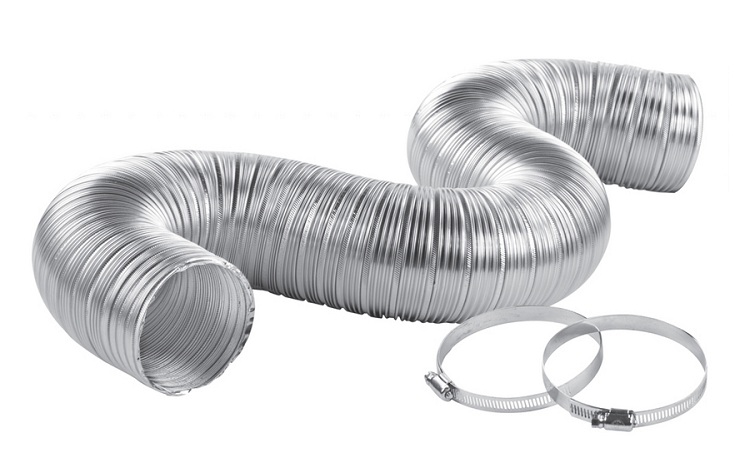
Corrugated pipes are flexible, lightweight and easy to install - ordinary clamps are used to connect them to the exhaust pipe
Options for selecting hoods and ducts
When choosing the components of the ventilation system, experts recommend paying attention to such points:
- power indicator of the exhaust device;
- exhaust device dimensions;
- compatibility of the hood with the interior of the kitchen.
The minimum power indicator for the hood can be calculated using a simple formula: calculate the volume of the kitchen (for this you need to multiply the length of the room by the width and height), and then multiply the figure by 10. Thus, we get the minimum power that the hood should have in a particular case .
In addition, the hood should fit the size of the gas stove. If you neglect this rule, then ventilation does not make much sense, all vapors and unpleasant odors will not be absorbed into it - some of them will remain in the room.
How to choose the right diameter for the exhaust pipes?
When choosing the diameter of the ventilation pipes for the hood in the kitchen, you must follow an important rule - the exhaust outlet should not be larger than the diameter of the pipe. If this rule is neglected, air resistance will increase and, accordingly, communication throughput will decrease. The most correct solution is to choose the diameter of the ventilation pipes for the hood so that it completely matches the size of the outlet in the device.
In addition, an important factor that affects the performance of the system is how exactly and with what bend the pipes pass. It is recommended to fix the pipes at an obtuse angle (it is very important that the angle is not greater than 90 °). Otherwise, a reverse thrust may form in the structure.
Important! Each bend of the pipeline at right angles reduces the performance of the system by 10%.
In order to protect the external channel from the possible occurrence of reverse thrust, a special valve can be installed. He will exercise control and regulation of the transported air and will not allow him to change direction. Before you begin the installation of the hood, you need to prepare equipment that you can not do without:
- range hood with power suitable for a particular kitchen;
- special brackets for fixing the device;
- exhaust pipe for hood;
- coupling collars;
- ventilation grill;
- adapters (if necessary);
Tools for mounting the hood:
- hammer drill or drill;
- screwdriver;
- roulette;
- marker;
- construction knife;
- hacksaw;
- level.
Steps for installing a built-in hood
The main steps for installing a built-in hood include:
- First, you need to prepare the necessary place for the built-in device (capacity or cabinet). It is important that there are no size mismatches.
- A hole for the duct must be made in the upper wall of the cabinet. There will be a transition ring.
- At this point, the cabinet must be fixed to the wall. For this, brackets are used. It is worth remembering that the distance from the hood to the stove is indicated in the instructions. Most often, this figure is 65 cm.
- Next, the panel of the exhaust device is fixed to a cabinet or other container.
- At the end, the installation of external plastic ventilation pipes for the hood. The ends of the pipes are joined with the exhaust hole and the ventilation duct.
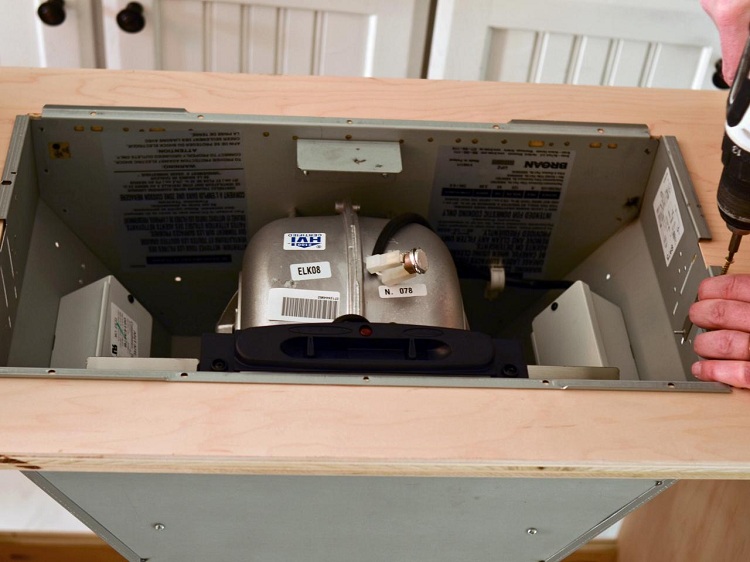
The cabinet or box into which the hood will be built in must exactly match the dimensions of the device, then it will be fixed securely
In order for the system to have good performance, it is necessary to perform it in compliance with the distance between the individual parts, as well as reliably connect all the parts.
Steps for installing a suspended hood
Installation of the suspension device is notable for its simplicity. For such a hood there is no need to make a special tank or box. The main stages of installation of a suspended hood include:
- First, you need to mark in the place where the exhaust device will be mounted.
- Mounted socket with grounding (must be near the hood).
- At this stage, the device is fixed to the wall using brackets.
- Further, as in the previous case, with the help of coupling clamps, pipes for the kitchen hood are connected.
Helpful information! The most popular disguise for such a system are kitchen cabinets. Today, their range is quite extensive, which allows you to choose the right solution for every taste. You can hide the exhaust pipes in a special plastic box or hold them in a suspended ceiling.
Extract in the cellar
A basement or cellar is a room that very often needs a ventilation system. The air in such a room usually stagnates and this adversely affects certain products that are stored there.
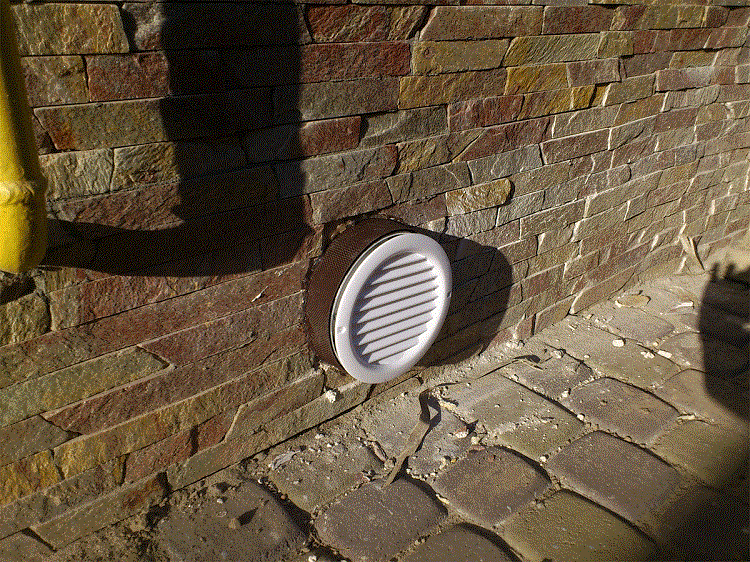
An extract in the cellar or basement is necessary and it is necessary to arrange it, observing the accepted rules
To equip the correct hood in the cellar, you need to adhere to a number of rules. Otherwise, poorly functioning ventilation communications will be useless. Stocks of vegetables and preservation in case of poor operation of the system will be subject to decay and other negative effects of the basement.
The most common constructive solution for basement ventilation is communication of two pipes, one of which performs an exhaust function, and the second a supply. Each of these pipes is mounted at its own level. The outlets of these two pipes are also located at different levels. For the exhaust pipe, a hole is made in the ceiling of the basement, and for the supply pipe - in the wall at a distance of 50 cm from the floor.
The diameter of the ventilation pipes for the hood in the cellar is calculated by a simple formula: 1 m2 the cellar should be 26 cm2 area of the ventilation duct.
In order to maintain a certain order and stability in the ventilation system, it is necessary to correctly position the construction outlet on the roof. Experts advise mounting such an exit over the ridge of the roof. This will allow you to get the best performance when using basement ventilation.
